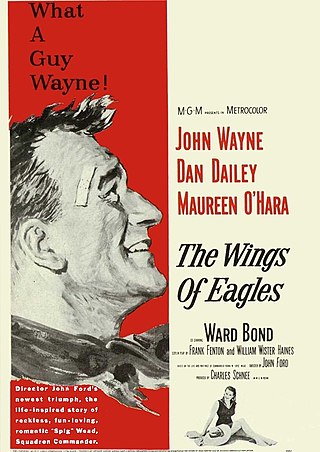
The Wings of Eagles is a 1957 American Metrocolor film starring John Wayne, Dan Dailey and Maureen O'Hara, based on the life of Frank "Spig" Wead and the history of U.S. Naval aviation from its inception through World War II. The film is a tribute to Wead from his friend, director John Ford, and was based on Wead's "We Plaster the Japs", published in a 1944 issue of The American Magazine.
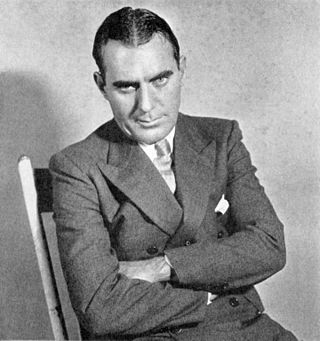
William Joseph Patrick O'Brien was an American film actor with more than 100 screen credits. Of Irish descent, he often played Irish and Irish-American characters and was referred to as "Hollywood's Irishman in Residence" in the press. One of the best-known screen actors of the 1930s and 1940s, he played priests, cops, military figures, pilots, and reporters. He is especially well-remembered for his roles in Knute Rockne, All American (1940), Angels with Dirty Faces (1938), and Some Like It Hot (1959). He was frequently paired onscreen with Hollywood star James Cagney. O'Brien also appeared on stage and television.
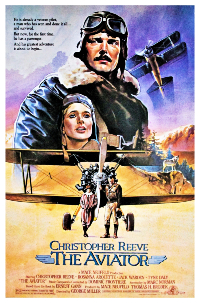
The Aviator is a 1985 American aviation adventure drama film directed by George T. Miller and starring Christopher Reeve and Rosanna Arquette.
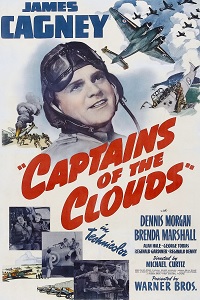
Captains of the Clouds is a 1942 American war film in Technicolor, directed by Michael Curtiz and starring James Cagney. It was produced by William Cagney, with Hal B. Wallis as executive producer. The screenplay was written by Arthur T. Horman, Richard Macaulay, and Norman Reilly Raine, based on a story by Horman and Roland Gillett. The cinematography was by Wilfred M. Cline and Sol Polito and was notable in that it was the first feature-length Hollywood production filmed entirely in Canada.

Tail Spin is a 1939 aviation film. The screenplay was written by Frank Wead and directed by Roy Del Ruth. It was based on the book, "Women with Wings: A novel of the modern day aviatrix", authored by Genevieve Haugen, who was also an advisor and stunt pilot in the film. Tail Spin starred Alice Faye, Constance Bennett, Nancy Kelly, Joan Davis, Charles Farrell and Jane Wyman.
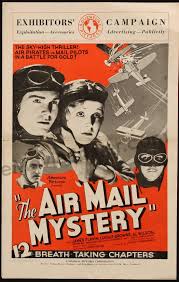
The Airmail Mystery is a 1932 Universal pre-Code movie serial directed by Ray Taylor, written by Ella O'Neill, starring James Flavin and Wheeler Oakman, and featuring Al Wilson doing the aerial stunts. The Airmail Mystery was Universal's first aviation serial that set the pattern for the aviation serials and feature films to follow. The film also marks the film debut of James Flavin. The Airmail Mystery is considered a lost film.

Gallant Journey is a 1946 American historical film written, produced and directed by William A. Wellman and starring Glenn Ford, Janet Blair and Charles Ruggles. The film is a biopic of the early U.S. aviation pioneer John Joseph Montgomery. Gallant Journey depicts his efforts to build and fly gliders, from his childhood through to his death in 1911. The chief stunt pilot for the film was Paul Mantz. It was produced and distributed by Columbia Pictures. It is also known by the alternative title The Great Highway

Flight from Glory is an American B movie about a run-down air cargo company in the Andes. It was directed by Lew Landers, and starred Chester Morris, Whitney Bourne, Onslow Stevens and Van Heflin. When released on August 20, 1937, Flight from Glory was considered one of the films that broke new ground in "pioneering airline sagas", comparing favorably to big-budget features such as 1936's Thirteen Hours by Air.
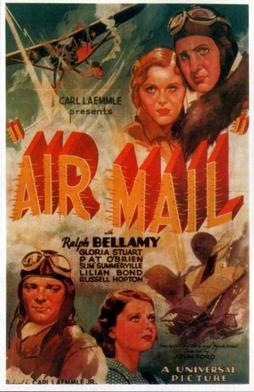
Air Mail is a 1932 American pre-Code adventure film directed by John Ford, based on a story by Dale Van Every and Frank "Spig" Wead. The film stars Ralph Bellamy, Pat O'Brien and Gloria Stuart. A copy is preserved in the Library of Congress.

Dive Bomber is a 1941 American aviation film from Warner Bros. Pictures, directed by Michael Curtiz, and starring Errol Flynn and Fred MacMurray. The film is notable for both its Technicolor photography of pre-World War II United States Navy aircraft and as a historical document of the U.S. in 1941. This includes the aircraft carrier USS Enterprise, one of the best-known U.S. warships of World War II.

Devil Dogs of the Air is a 1935 Warner Bros. film, directed by Lloyd Bacon and starring James Cagney and Pat O'Brien, playing similar roles as close friends after making their debut as a "buddy team" in Here Comes the Navy. Devil Dogs of the Air was the second of nine features that James Cagney and Pat O'Brien made together. The film's storyline was adapted from a novel by John Monk Saunders.

China Clipper is a 1936 American drama film directed by Ray Enright, written by Frank Wead and starring Pat O'Brien, Ross Alexander, Beverly Roberts, Humphrey Bogart and, in his final motion-picture appearance, veteran actor Henry B. Walthall. Walthall was gravely ill during production and his illness was incorporated into his character's role. He died during production.

The Flying Fleet is a 1929 sound romantic drama film directed by George W. Hill and starring Ramon Novarro, Ralph Graves, and Anita Page. While the film has no audible dialog, it was released with a synchronized musical score with sound effects using both the sound-on-disc and sound-on-film process. Two United States Navy officers are rivals for the love of the same woman.

Women in the Wind is a 1939 film directed by John Farrow and starring Kay Francis, William Gargan and Victor Jory. The plot concerns women pilots competing in the so-called "Powder Puff Derby", an annual transcontinental air race solely for women.

International Squadron is a 1941 American war film directed by Lewis Seiler and Lothar Mendes that starred Ronald Reagan, Olympe Bradna and in his final film, James Stephenson. The film is based on the Eagle Squadrons, American pilots who volunteered to fly for the Royal Air Force during World War II. International Squadron featured noted Hollywood pilot Paul Mantz who acted as the film's aerial coordinator and flew during the production.

The Flying Fool is a 1929 aviation-themed film produced and distributed by Pathé Exchange as both a silent film and sound film just as Hollywood was transitioning to filming with sound. Tay Garnett directed and William Boyd, Russell Gleason and Marie Prevost starred.

Border Flight is a 1936 American aviation drama film directed by Otho Lovering and written by Stuart Anthony, Arthur J. Beckhard and Ewing Scott. The film stars Frances Farmer, John Howard, Roscoe Karns, Robert Cummings, Grant Withers and Samuel S. Hinds. Border flight was based on the exploits of the US Coast Guard pilots, based in San Diego. In Aviation in the Cinema (1985), aviation film historian Stephen Pendo considered Border Flight, a drama that "detailed the aerial activities of the United States Coast Guard fighting a gang of smugglers."

20,000 Men a Year is a 1939 American action film directed by Alfred E. Green and written by Lou Breslow and Owen Francis. The film stars Randolph Scott, Preston Foster, Margaret Lindsay, Mary Healy, Robert Shaw, George Ernest, Jane Darwell, Kane Richmond and Maxie Rosenbloom. It was the fourth and last film produced by Cosmopolitan Pictures in its final year of operation.
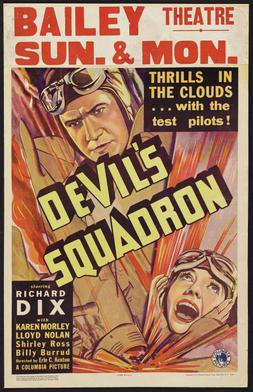
Devil's Squadron is a 1936 American drama film directed by Erle C. Kenton and starring Richard Dix, Karen Morley and Lloyd Nolan. The following written prologue appears after the opening credits: "This picture is dedicated to the test pilots....those men who knowingly face death every time they leave the ground in an untried airplane. We never hear of these men, yet on their courage depends the future of aviation."

Stunt Pilot is a 1939 American adventure film directed by George Waggner and written by Scott Darling and George Waggner. The film is based on the comic strip Tailspin Tommy by Hal Forrest and Glenn Chaffin. Stunt Pilot stars John Trent, Marjorie Reynolds, Milburn Stone, Jason Robards Sr., Pat O'Malley and George Meeker. Following the success of Mystery Plane (1939), Stunt Pilot, the second in the "Tailspin Tommy" series, was released on July 2, 1939, by Monogram Pictures.





















